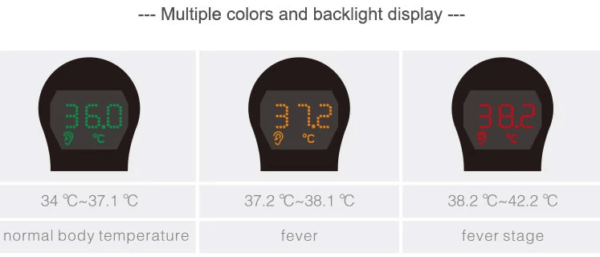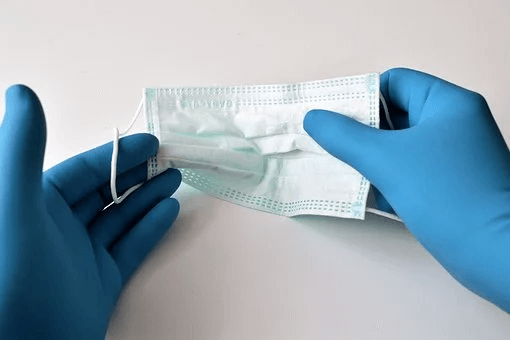How To Select The Best InFraRed Thermometers
Infrared Thermometers have acquired a new importance in the wake of the emergence of the highly infectious COVID-19 disease. Offices, schools, hospitals and even places like airports and train stations will need the ability to check visitors’ temperatures for signs of the fever that is one of the main signatures of this disease. In this post, we propose 5 key factors that someone looking to buy one of these thermometers should consider. In this way, we will try to come up with some answers to the question of which are the best infrared thermometers.
Choosing The Best Infrared Thermometers
However, as with many questions of this type, it is important to realize that there is no one model that is best for all situations. Unless cost is no object, the choice will need to be made by balancing the pros and cons of the various designs. You will then need to match the strengths of each design against the highest priority needs of your situation.
Range Of Temperature Measurement
This is one of the most important considerations in choosing the best infrared thermometers for your needs. If you need an infrared thermometer for general use around the home, the required range of temperatures will be very wide. You would then be looking for a thermometer with a range of around -50°C to 550°C.
However, if you need a thermometer to detect possible COVID-19 infection, you will be looking for one that spans the normal temperature range of the human body and includes the ranges associated with a fever. This would normally mean a much smaller range than that mentioned in the previous paragraph – around 35°C to 42°C. The IRT1603 Digital InfraRed Thermometer, for example has a measurement range of 34.0ºC to 42.2°C. This provides the range you would need to detect a possible fever in a human subject.
Speed Of Temperature Measurement
The best infrared thermometers can provide accurate temperature readings in very short periods. This is critical when you consider the need to check the temperatures of employees arriving at a large office. In this situation, there may be possibly hundreds of individuals arriving in the space of about an hour. Alternatively, consider 200 or 300 individuals entering a bus or train commuter station in possibly an even shorter period.
Look for a thermometer that can provide a temperature indication in as little as one second. This is a much shorter period than you would expect from a standard digital thermometer like a pacifier thermometer or the DT01-B thermometer. However, it is well within the capability of the infrared technology that these thermometers use.
Accuracy Of Temperature Measurement

InfraRed Thermometers can provide temperature measurements in as little as a second. However, they are just as accurate as traditional digital thermometers. If you are looking for the best digital infrared thermometer to protect others at your office or clinic, you should expect accuracy of around 0.1°C from the model that you eventually select. Given the importance of the use to which you are putting the readings, accuracy has to be of foremost importance.
The best infrared thermometers will provide either a voice or color coded confirmation of the reading. For example, the best models will provide a backlight that flashes after the reading. The backlight will use different colors to indicate the level of fever risk. One color code scheme might be green for a safe temperature, yellow for a moderate fever risk and red if the reading is well inside the “fever zone”.
For more information on taking accurate measurements with a thermometer, please see this post.
Adjustable Emissivity
The best infrared thermometers will also offer the ability to measure the temperature of different surfaces. To do this, the thermometer needs the ability to adapt (or be adjusted to accommodate) the reflectivity of different surfaces. This reflectivity is also known as the infrared emissivity of the surface.
Most infrared thermometers are locked at an emissivity level of 0.95. This will work well when used to measure the temperature of a solid metal surface or wall. However, it will produce less satisfactory results when used on liquids or oily surfaces. A top quality model will offer the ability to adjust emissivity in the range 0.1 and 1.00. This will allow you to take accurate temperature measurements across a wider variety of situations.
Distance To Spot Ratio
This is a measure of how much the size of the target spot that you are measuring increases as you increase your distance from it. In general, you will want to obtain the most accurate reading while standing as far as possible from the subject (for your own safety). InfraRed Thermometers with the highest distance to spot ratios will allow you to do this. They are therefore preferable, other things being equal.
Choosing The Best Infrared Thermometers: Conclusion
In this post, we have laid out the most important factors that you should consider when choosing the best InFraRed Thermometer for your needs. If you will be using the thermometer for screening individuals who may be carrying an infectious disease, the most important factors will probably be speed, accuracy and the distance to spot ratio (to ensure your own safety). You should be therefore looking to optimize those particular factors while staying within your budget.








Good explanation
Thankyou so much for sharing this
Are these available in Nz my child refuses to take his temp using a thermometer yet loves stickers. The only time he takes his temp is when his favourite doctor is available
I’m sure that you will be able to find a selection of infrared thermometers in New Zealand. I don’t live there but I am sure you can find them in your local medical supplies store.